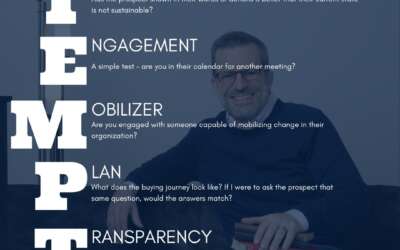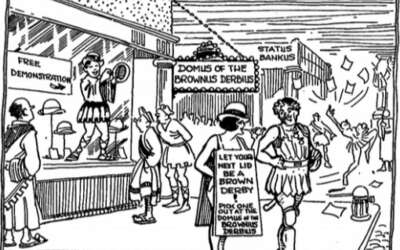The Irony Of The Sales Expiring Discount
The Fall has arrived, and sadly, I’ve managed to mangle one of my favorite sweaters. It’s a merino crewneck sweater from Banana Republic – that I accidentally threw in the wash with the rest of my clothes – washed, dried, now unwearable.
So, off to bananarepublic.com to buy another.
As the weather is turning cooler, everything is lined up for me to buy. I have the desire. It’s not the most expensive sweater around…so I have the means. I’ve been to the website to make sure they still have it. But I’m waiting.
Why? Because I know a discount is coming. I can’t be sure when. But to pay full price for a sweater on BananaRepublic.com would feel like I’m flushing dollars down the toilet.
Waiting.
Ready to buy.
The difference between a few weeks doesn’t really matter to me.
Ironic, isn’t it?
The use of an expiring discount is causing me to wait to buy.
In the B2B sales world, sellers from companies large and small have established this exact same mindset in buyers. Sellers offering expiring discounts at the end of the quarter, just like a Banana Republic promotion, signalling that by offering a discount without asking, they should do two things:
- Wait
- Ask for more
Wait and Ask For More
As a sales leader, it felt like I was giving my sellers a gift when I’d work with my CEO and CFO to get approval to offer a quarter-end discount to our prospects.
In fact, I was doing the opposite.
Given we weren’t just selling transactional deals, but also more complex enterprise transactions, the earlier we could establish the promotion, the better!
“Great news! You can start to socialize this with your opportunities right now…we’ll be offering 10% off for ClosedWon new business signed by the end of the quarter!”
The reps then begin to socialize the promotion with their prospects.
As a result, the prospects have now been subconsciously signalled to wait.
The prospects have also now been signalled that this quarter is important, so why wouldn’t they ask for even more?
“If they’re already offering 10%, I’ll bet I can get more if I slow play this a bit, and simply ask.”
Eroded deal values. A steeper end-of-quarter hockey stick.
AND…causing a client to wait increases deal risk. Every day a buyer waits is a day when another priority could sneak in, another option could sneak in, a job change could sneak in, a…something could cause your deal to just go POOF!
Once you give something without asking, you’ve signalled the buyer to ask. Imagine stumbling over a rock, and finding a $20 bill under it. Wouldn’t you start kicking over every rock? You wouldn’t bother if you hadn’t accidentally found the first one, right?
What to do instead
There is a way to change this dynamic. It takes a little foundation laying and forethought, but it can be done, and has successfully been done in (shameless self-promotion) the companies I’ve taught transparent negotiations to:
Step 1: Stop offering expiring discounts. They don’t motivate, they decelerate and disintegrate.
Step 2: Align around the prospect’s timing. Discuss a close plan, or as I describe in The Transparency Sale, a “mutual decision plan”.
Step 3: Have them put a little skin in the game.
“There is value to us and our organization in our ability to predict our business. As you can imagine, our ability to forecast impacts every element our business; and, us personally in the sales organization.
“If you are willing to mutually align around the timing of when you think you’ll get this done, we’re willing to pay you in the form of a discount to stick to it.”
Have the client tell you when they think it can get done. Add a little buffer. Be transparent.
“So, it appears as though the end of November seems like reasonable timing, right? How about this, if you’re willing to help us forecast by getting this done before the holidays…so say December 15th, as I mentioned before, there’s value in our ability to forecast, and also value in not having to be worrying about this in late December. We’re willing to pay you in the form of a discount to get this inked and kicked off by December 15th. Would that work for you?”
Mutual alignment.
Skin in the game for the client.
Nothing is given without something received.
And, the transparency of forecast accuracy – an actual explanation for why we’d be willing to pay the prospect in the form of a discount – begets transparency on behalf of the prospect.
Of course, you will have instances where the client doesn’t get it done in time. I discuss what do to in these instances in the book and in the Transparent Negotiation workshops. HOWEVER…
…This shift in dialogue and mutual alignment with your prospects will change the discussion and the dynamic immediately. It changes the client’s motivation. It creates a more accurate forecast. It spreads out your business beyond just the last week of a quarter. It helps you maintain overall deal values.
And, as a transparency nerd, it helps you to build trust through to the goal line versus the traditional approach which erodes it.
Try it. You’ll like it.





0 Comments